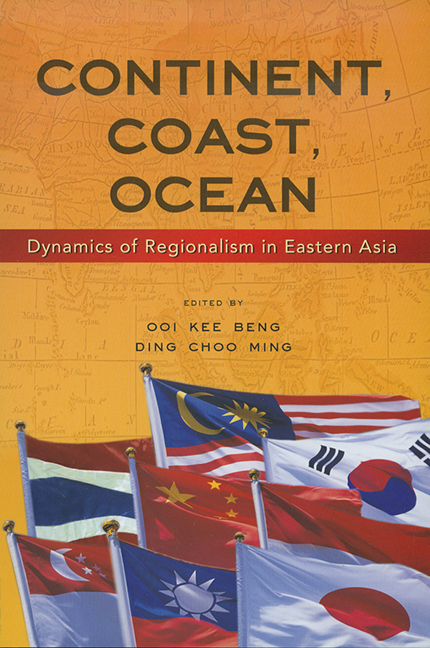Book contents
- Frontmatter
- Contents
- Foreword by Shamsul A.B.
- Contributors
- Introduction
- PART ONE PUTTING JAPANESE IMPERIAL HISTORY TO REST
- PART TWO THE ECONOMICS OF REGIONAL INTEGRATION
- PART THREE INTER-REGIONALISM AND REGIONALISM
- PART FOUR NEW KNOWLEDGE, NEW PROBLEMS, NEW SOLUTIONS
- 9 Reinventing Traditional Values for Our Future: A Malaysian Organizational Response
- 10 The Dynamic Growth Order in East and Southeast Asia: Strategic Challenges and Prospects in the Post-9/11 Era
- 11 Islam in Asia: The Way Ahead
- Index
11 - Islam in Asia: The Way Ahead
from PART FOUR - NEW KNOWLEDGE, NEW PROBLEMS, NEW SOLUTIONS
Published online by Cambridge University Press: 21 October 2015
- Frontmatter
- Contents
- Foreword by Shamsul A.B.
- Contributors
- Introduction
- PART ONE PUTTING JAPANESE IMPERIAL HISTORY TO REST
- PART TWO THE ECONOMICS OF REGIONAL INTEGRATION
- PART THREE INTER-REGIONALISM AND REGIONALISM
- PART FOUR NEW KNOWLEDGE, NEW PROBLEMS, NEW SOLUTIONS
- 9 Reinventing Traditional Values for Our Future: A Malaysian Organizational Response
- 10 The Dynamic Growth Order in East and Southeast Asia: Strategic Challenges and Prospects in the Post-9/11 Era
- 11 Islam in Asia: The Way Ahead
- Index
Summary
Islam as encapsulated in Samuel Huntington's Clash of Civilizations and the Remaking of the New World Order is a culture very much at variance with the Christian West. In his words, “both are universalistic, claiming to be the one true faith to which all humans can adhere. Both are missionary religions believing that their adherents have an obligation to convert non-believers to that one faith” (1996: 211). By alluding to “bloody borders” arising from their juxtaposition and encounter, he considers Islam not only as incongruous, but as being at odds with other ways of life. Huntington's simplistic rendering of history and international relations has won many a follower, not least among policymakers in the West searching for a bogey-man, following the collapse of the Soviet Union and the disintegration of world communism. Some Asian leaders, especially those of Sino-Confucian background, are equally swayed by his thesis in spite of their long-standing association with Muslims and their religion.
It is argued here that there is a coincidence of interests between Muslims and non-Muslims in the context of Asian development. While the convergence is not necessarily pervasive, given existing differences, the appropriation and incorporation of Islamic values on both sides should enable them not only to co-exist peacefully but also to progress together. No doubt, the adoption of Islamic principles will find support among Muslims with a fundamentalist bent, but nevertheless it may still accord with the interests of non-Muslims, provided they understand Islam as a total system.
ISLAM AS A RELIGION FOR ALL
Contrary to popular non-Muslim beliefs, Islam is not an exclusive religion intended for followers of the faith alone. It is a religion that addresses Muslims and non-Muslims alike. In fact, beyond that, it is also a creed that is concerned with the welfare of animals and insects, the well being of the plant world, and the whole environment. The Quran in categorical terms refers to Prophet Muhammad as “a mercy for the whole universe” (21: 107). Adherents of the faith who understand its religious teachings abide by them, even though throughout Muslim history there have been aberrations and deviations which all in all have damaged Islam's reputation as a religion of peace.
- Type
- Chapter
- Information
- Continent, Coast, OceanDynamics of Regionalism in Eastern Asia, pp. 207 - 216Publisher: ISEAS–Yusof Ishak InstitutePrint publication year: 2007

